
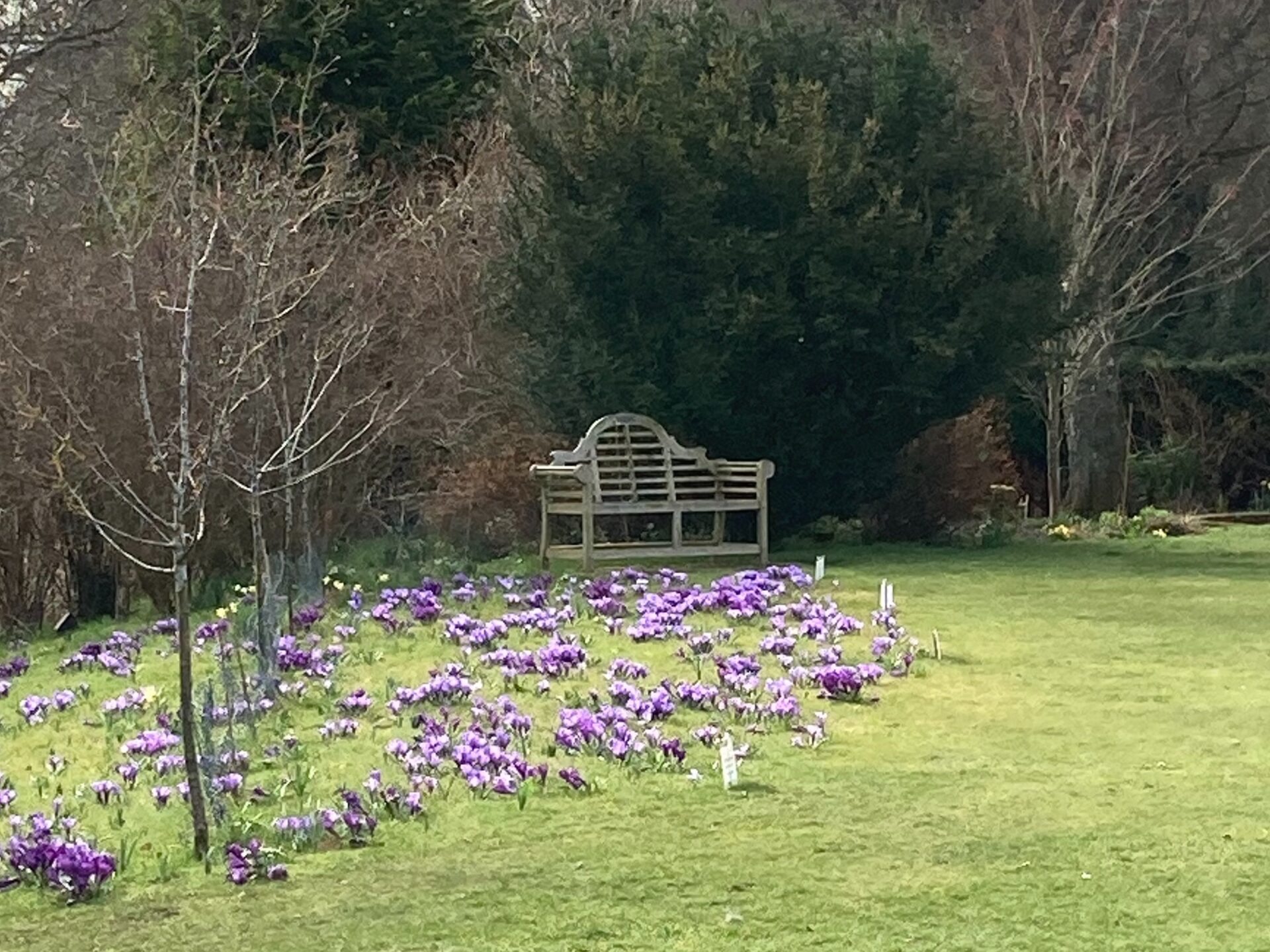
March
Even if we have snow flurries this month in the gardens at Paxton House, nothing deters the bright flowers of crocuses. Our favourites this year are the blue Crocus vernus “Flower Record”, which we grow in profusion naturalised into the lawns on the South Front of the house. They spread naturally as the corms divide underground and our display has taken years to establish. They thrive in the lawn before the trees start to put out leaves, making the most of the lengthening Spring days, we just have to be careful not to mow down the leaves before the corm has a chance to replenish its nutrients for next season.



April
The daffodil display at Paxton House is famous. The house sits in parkland planted thickly with naturalised daffodil bulbs and in April they are blooming marvellous. There is now a bright swathe of yellow across the whole of the entrance front which really sets off the grandeur of the pillared portico designed for Patrick Home of Billie by the Adam brothers, John and James, in 1756. At least a dozen varieties of daffodil and narcissus are grown at Paxton and most of them are looking their best right now. They vary from big showy bright yellow daffodils to delicate pheasant eye narcissus with its white petals and red edged orange centre. In the range, the pheasant eye narcissus is the nearest variety to the original Mediterranean daffodil, immortalised in the Greek myth of self-obsessed youth, Narcissus, who fell in love with his own reflection. It’s Latin name is Narcissus poeticus, so it is also known as the Poet’s Narcissus. Perhaps it will inspire you with a verse or two or perhaps you prefer the out and out vulgarity of our grand large sulphur-yellow daffodils. TV naturalist Chris Packham recently called the brightest daffodils ‘naffodils’ but we love their cheery colour and bold shapes. The native wild daffodil of Britain is smaller and paler, closer to several of the cultivated varieties we grow.
Whichever is your favourite, join us this month to celebrate the way daffodils at Paxton herald the arrival of Spring.



May
Now it is May, the candelabra primulas are a must see in the gardens at Paxton House. Their distinctive lollipop heads and cheerful bright colours bring the first feel of summer and warm days to come. If you walk down through the Well Garden, you will see them gathered in groups at the edges of the stream and popping out of the foliage at the side of the path. They thrive in the hummus-rich semi shade on the south-facing slopes above the Tweed and have formed naturalised clumps of pinks and purples that can’t help but bring a smile to your face. We work hard dividing our mature plants in the early Spring so that there are lots of pots of primulas for visitors to buy in our plant shop. Proceeds from sales of our plants are used to fund new planting each year so we really appreciate your purchases. Now is the time to take a little colour home for your garden
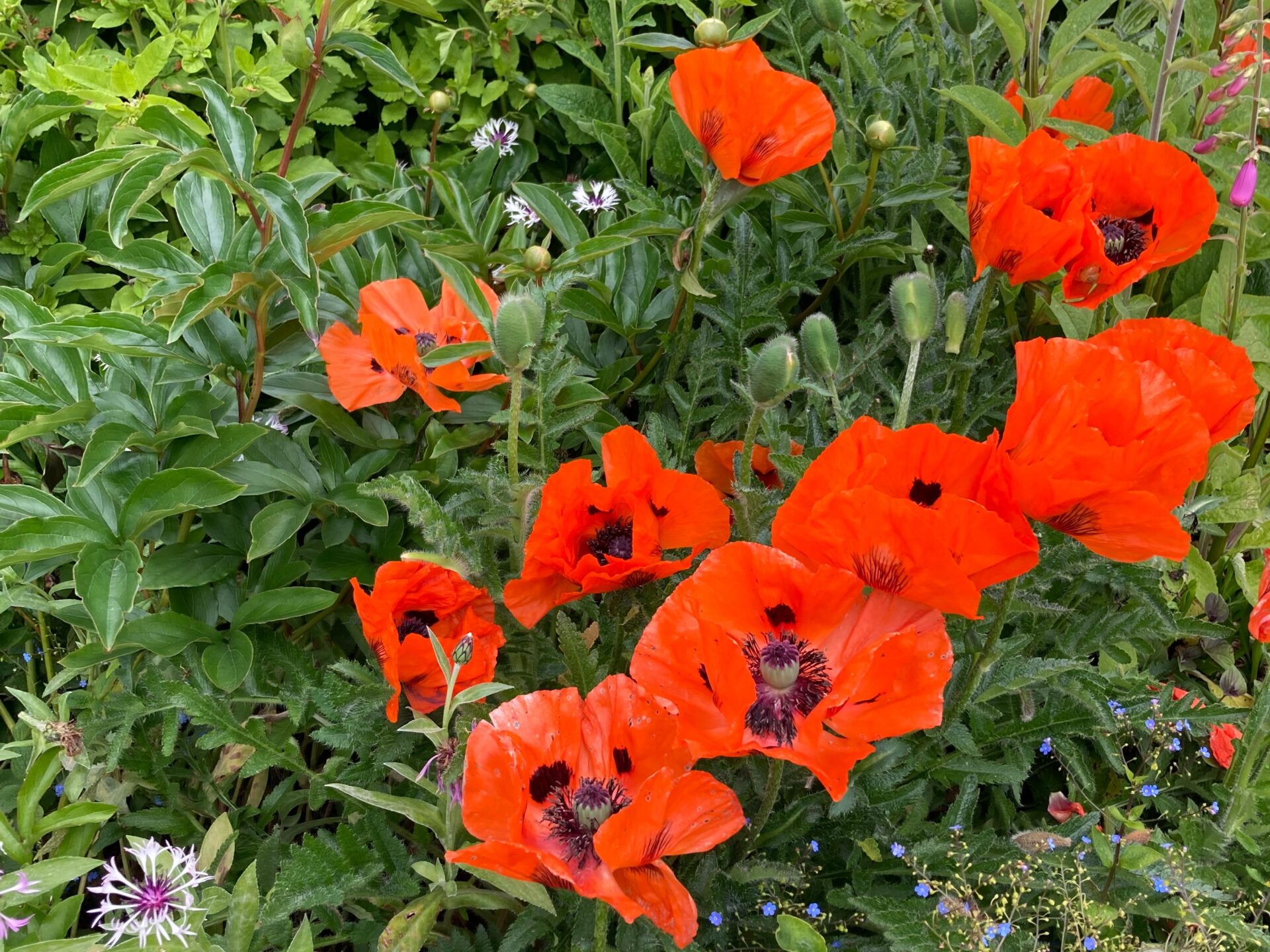
June
Poppies are one of the most striking plants in the border in June at Paxton House. We love the giant oriental poppies (Papaver orientale) with dark bases to their petals; these scarlet ones are ‘Beauty of Livermere’. They are cousins of the familiar field poppy (Papaver rhoeas) but so over the top they could audition for Ru Paul’s Drag Race. There are several cultivars in the borders at Paxton House; another favourite is the white and purply black flower called Papaver orientale ‘Royal Wedding’. The attractive serrated bristly leaves add texture to the Spring border but will die away after flowering, giving us space for later developing plants to take us into Autumn. Like their wild cousins, these poppies are not the best flowers for picking but wait a bit and the dried seed heads will look marvellous in flower arrangements.

July
We give the herbaceous borders a sense of flow and structure with repeated groups of tall campanulas at Paxton House Gardens in July. The massed bell flowers of Campanula lactifolia ‘Prichard’s Variety’ add grace and structure from the back of the border growing up to 1.2 metres tall. Their pale lilac-blue colour is the perfect foil for other July flowering perennials, particularly the silver stems and white and magenta flowers of Lychnis coronaria. This year, we particularly love the contrast between clumps of campanula flowers and our striking red and black Asiatic lilies, variety ‘London Heart’. Campanulas are very undemanding and will grow in sun or partial shade and have the added bonus of not being popular with deer or rabbits. Well sheltered by walls, ours tend not to need much staking but they can be vulnerable to wind damage in more exposed sites. They’ll keep flowering all month so now is a great time to come and see them.
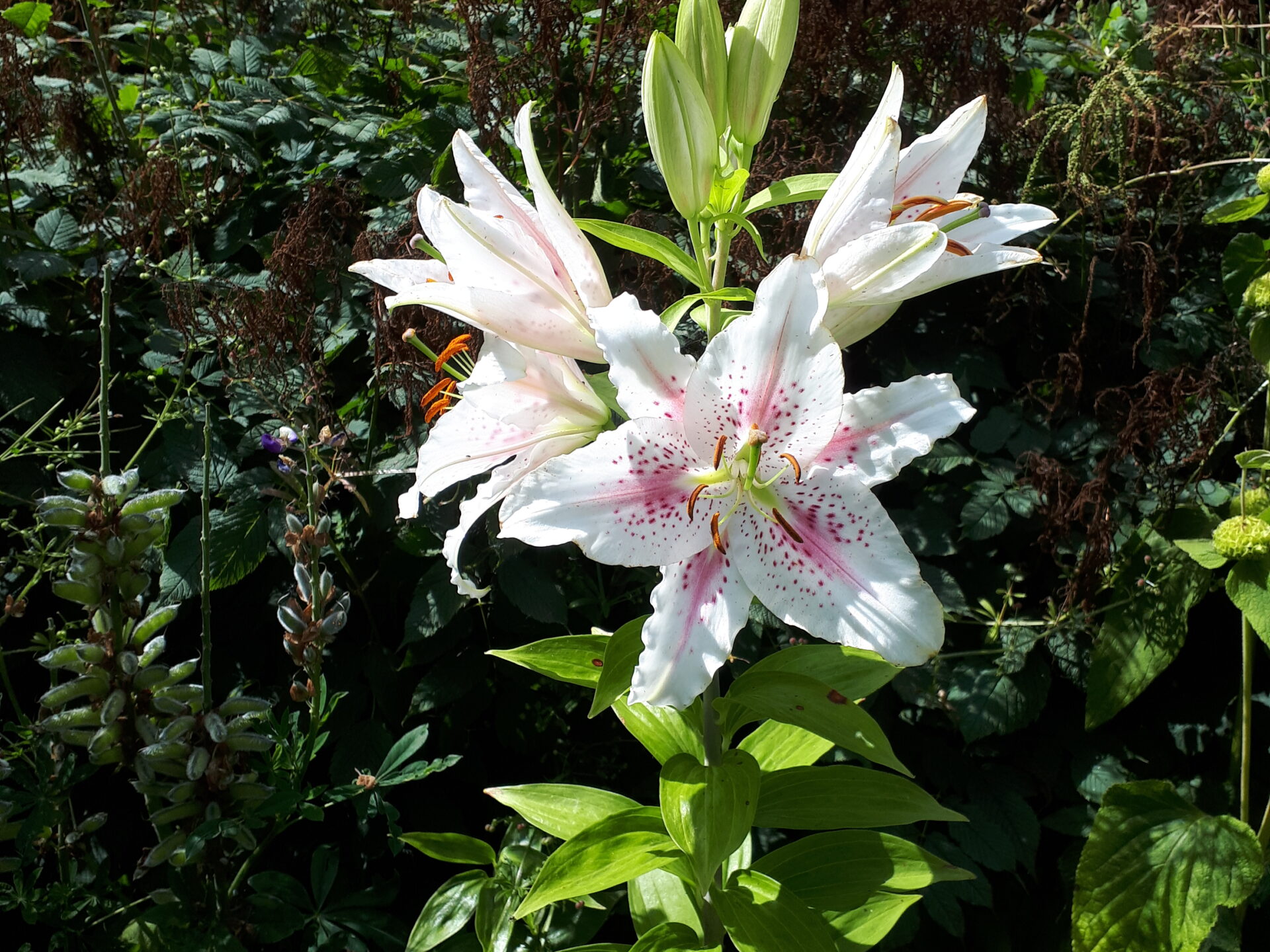
August
For flowers with a real wow factor, head for Paxton House Gardens this August and check out our oriental lilies. Our favourite are these beauties, Lilium ‘Muscadet’. Standing nearly a metre tall they dominate the border with their magnificent white flowers tinged with soft pink and scattered with pink spots. There is nothing quite so showy and, on a warm day, they fill the air with scent a perfumier would die for. They are perfect candidates for bouquets as well but we prefer to see them bringing some spectacle to the herbaceous borders.

September
Soft September rains have given the gardens at Paxton House a much needed rehydration boost, but if the imminent arrival of Autumn gives you a gloomy feeling, a visit to our vibrant flowerbeds will remind you that Autumn has its own delights. The minute September started, the cheeky pink cups of autumn crocuses – Colchicums – began to push up through shady corners of the beds. Their nickname, Naked Ladies, seems very apt since they dispense with the normal decent covering of leaves (those belong to Spring) and send up just their bare pink flowers on long wavering white stems. Seek the earliest autumn crocuses at Paxton by the pond under the big birch tree, a spot they particularly like because there is space for their strappy leaves to spread in Spring and they get enough light but not too much exposure to sun.
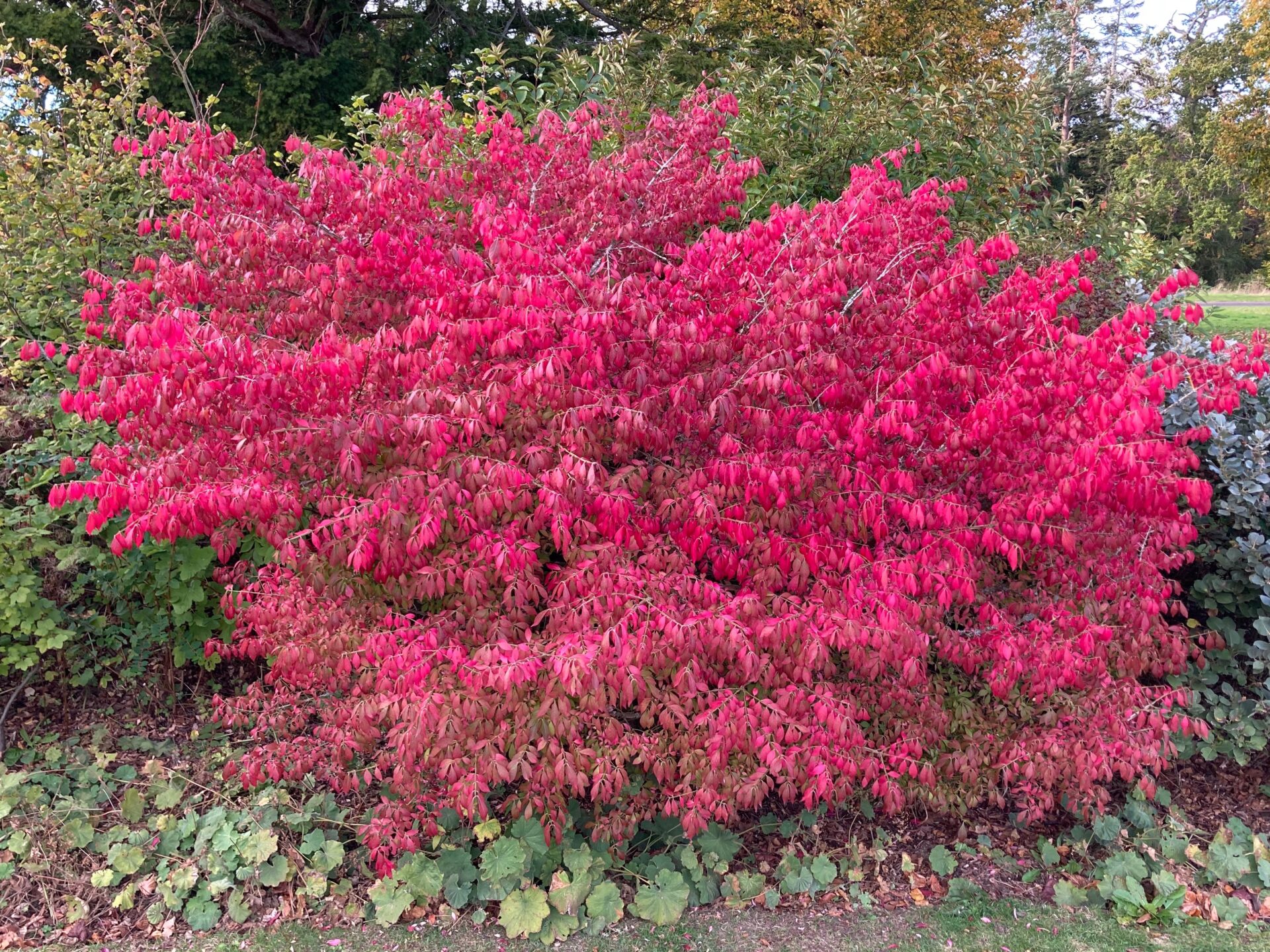
October
Sitting quietly behind the bus stop at the visitor entrance to Paxton House is an unassuming shrub which, for most of the year, you will pass without really noticing. This month, however – wow! – our Euonymus alatus is on fire!
Euonymus alatus hails originally from China and was introduced to Great Britain in the 19th century. It has deep green foliage and inconspicuous greenish flowers in Spring but its autumn colour has earned it the nickname ‘Burning Bush’. It is an exotic relative of our native spindle tree (Euonymus europaea) and a little later will produce some dark berries which will split to reveal orange cores just as spindle trees do. Meanwhile, don’t miss seeing it this month in all its fiery glory.
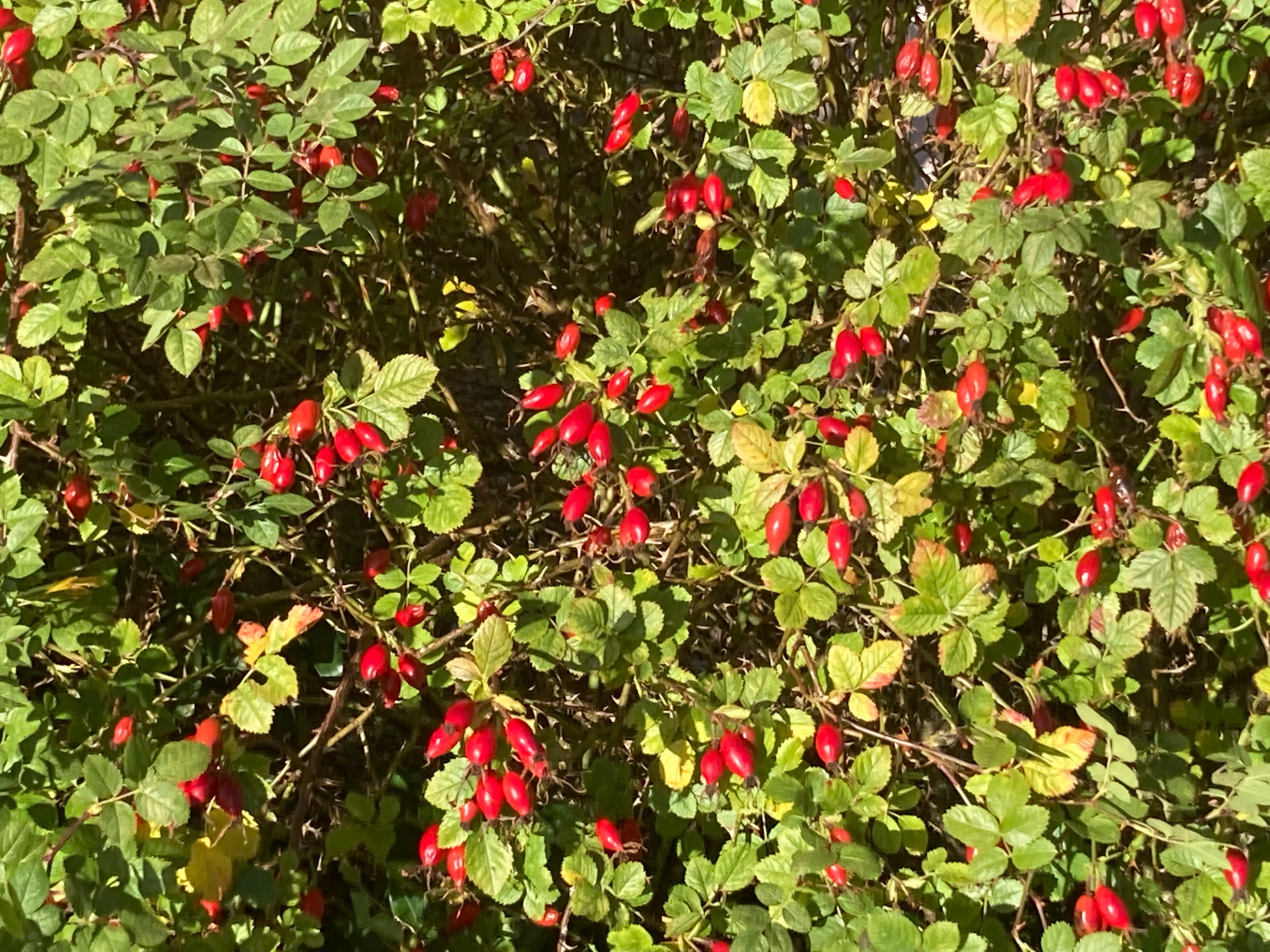
November
Paxton House Gardens are full of mellow fruitfulness! Autumn is a time of plenty and the wildlife all around us is stocking up for winter. The trees and shrubs in the gardens are laden with berries this year. Birds have already stripped the rowans and elderberries but there is plenty more for them. This year’s bumper crop of apples means that there are many fallen to the ground where they are a favourite food of badgers, mice, voles and hedgehogs as well as wasps, ants and other invertebrates. The rich reds of berries are very decorative; we particularly love the vibrant Pyracantha coccinea, Cotoneaster suecicus and bright red rosehips on our many species roses.
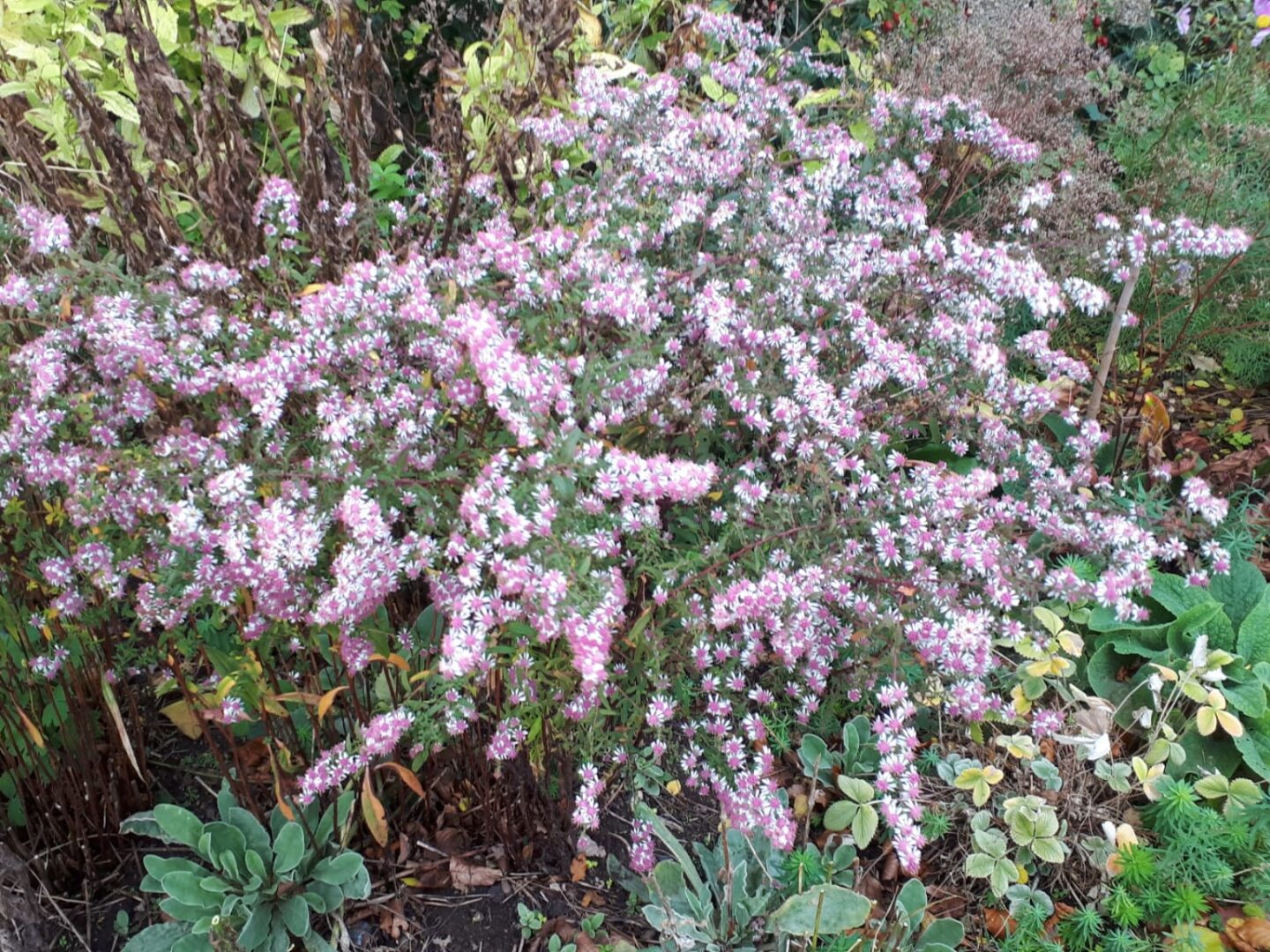
December
Brighten up your winter garden with the Calico Aster (Aster lateriflorus Horizontalis). It brings a welcome burst of colour at this time of year with white flowers (well, bracts actually) with pink fluffy centres carried on long stems that shoot out from the centre of this compact little bush like fireworks. They don’t grow very large but they look so jaunty on the edge of the borders at Paxton House Gardens. Legend has it that these little flowers sprang up where the tears of Astraea, the Greek goddess of the stars, fell. They seem much too cheerful to us to have any association with tears.

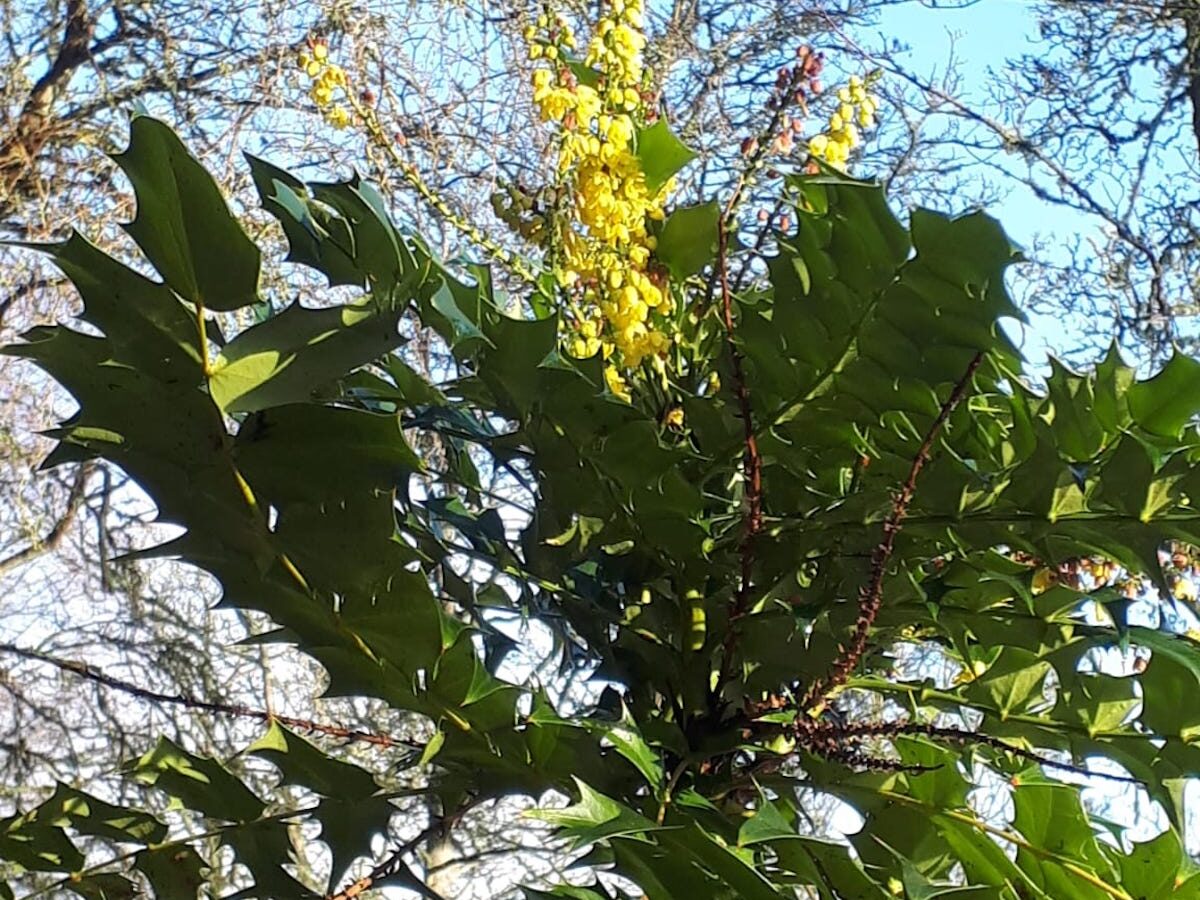
January
January is an in-between month, the crossing point between winter and spring in the garden. Admittedly the first snowdrops are just poking their heads above the soil but even the most optimistic gardener is stuck with finding something to praise in the duns and browns of quiet earth and decaying vegetation. Our saviour at Paxton Gardens is the flamboyantly cheerful yellow of Mahonia japonica. This exuberant stately shrub can be kept in check with regular pruning as a compact bush or allowed its head when, as we have it, the plant shoots up into a tall spiky gangster of a plant, prickly, bright and confident. If, as in the Well Garden at Paxton, it grows to a couple of metres tall, the lower branches will become bare trunks and the plant will provide a brilliant splash of vibrant yellow high at the back of the border. Winter brides who are clever enough to include the long racemes of mahonia in their flowers gain, not only vital colour, but architecture too with one of the best plants for a winter wedding bouquet.
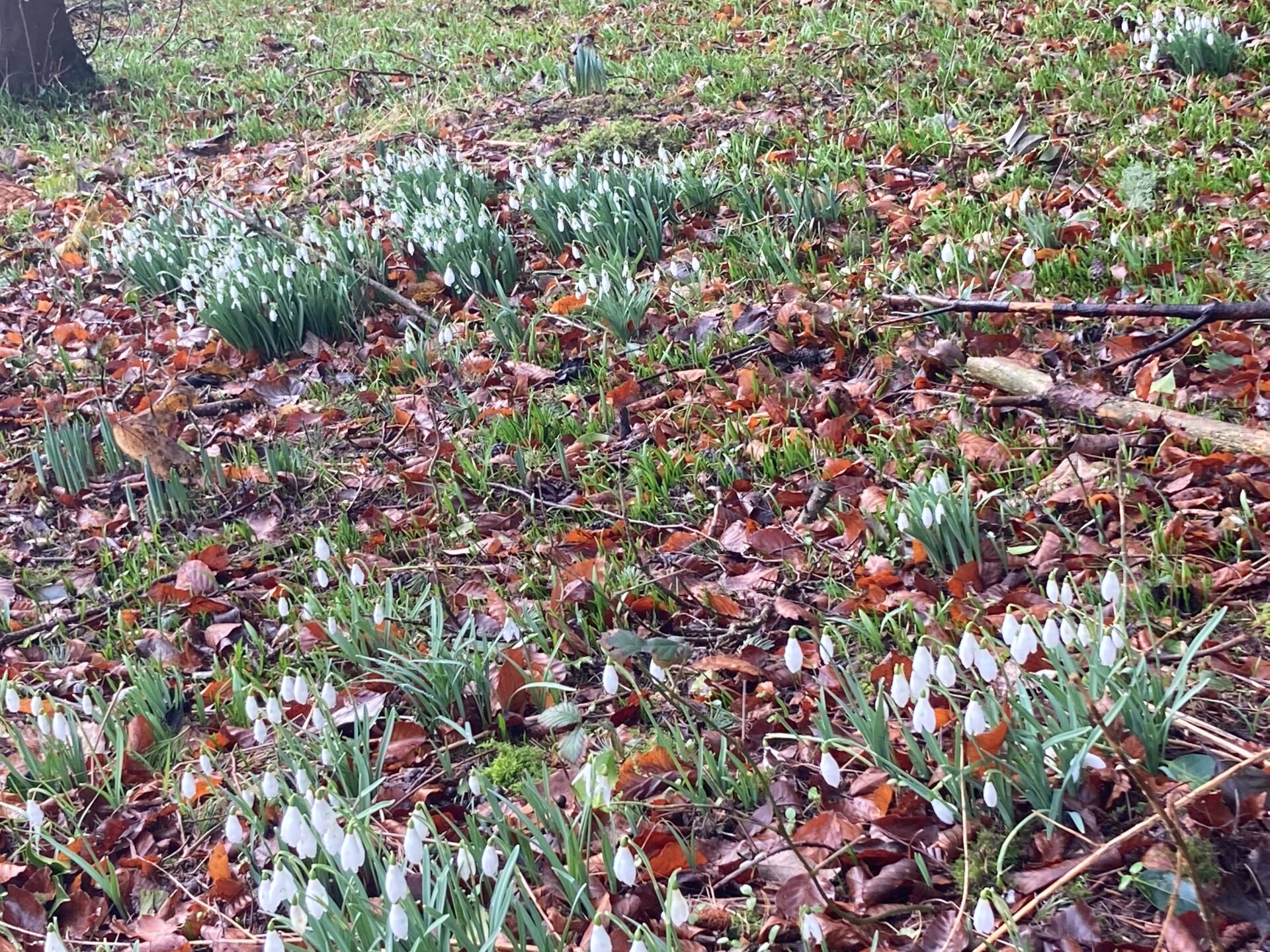
February
There is always special time in the year when the snowdrops just seem to get on with being gorgeous. We thought you should know that Paxton House Gardens is full of snowdrops now, like tiny dancing ballerinas hiding in the corners of the beds and under the trees. Seek them out on your walks Snowdrops are such special little harbingers of Spring and though they are hard to establish, in an old garden like Paxton they have had decades to develop into drifts of pure white which seem to glow in dull weather. Come before the end of the month to catch these shy little flowers before they give way to gaudier delights as Spring takes hold.